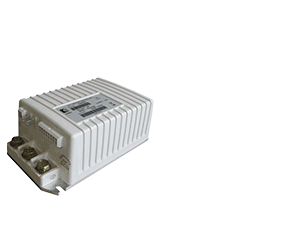There’s something to be said about due diligence, especially when it comes to your golf car’s batteries. While many individuals and golf courses are content with simply charging batteries overnight, and checking water levels whenever they get around to it, others conform to a strict maintenance schedule that ultimately prevents numerous conditions that can lead to poor performance and ultimately, battery failure.
Run It Till It Dies
The downtime while your batteries are charging is often inconvenient and some golf car owners run the car until it’s nearly out of power or dead altogether. Batteries that experience frequent deep discharges (discharges of more than 50-percent of a battery’s rated capacity) will have dramatically shorter life than batteries with lower depth of discharge (DOD). The use of ‘opportunity charging’ or charging at every opportunity instead of waiting to recharge until batteries are fully discharged will dramatically increase battery life. (This should not take the place of fully charging regularly.) If you need longer runtime between charges, consider switching to batteries with higher amp-hour capacity. This may require switching to a different type of battery with a lower voltage per monoblock but higher capacity.
For example a golf car with a 48-volt battery pack can use four 12-volt batteries, six 8-volt batteries or eight 6-volt batteries (if space is available). While all provide the same 48-volt pack voltage, the eight 6-volt batteries provide the highest capacity and runtime. According to Fred Wehmeyer, Senior VP of Engineering at U.S. Battery Manufacturing, a battery that is routinely discharged to 40% DOD will last about 2.2 times longer than a battery that is discharged to 80% DOD. The initial cost for eight 6-volt batteries is higher than four 12-volt batteries; but considering how much longer they will last, the return on investment is much greater.
Water Whenever
Failing to consistently check water levels and add water to your batteries can also result in low capacity and eventual battery failure if left unchecked. Watering flooded lead acid batteries is one of the most basic and important maintenance procedures. During battery charging, gases evolved from the decomposition of water results in water loss. This lost water must be replaced by regular water addition. The rate of water loss can be even higher at elevated temperature and water levels must checked more frequently. If water is not replaced regularly, the tops of the battery plates in each cell can become exposed to air and damaged to the point that capacity is reduced and battery life is shortened. Electrolyte levels should always be maintained above the top of the plates by adding water before charging and after charging to about 1/8-inch below the bottom of the vent wells. Final watering should be done after charging to prevent electrolyte overflow.
If you really hate watering batteries, consider a Single Point Watering System and a battery watering monitor. These often come in kits that are pre-made for specific golf cars and/or battery packs. Monitors such as U.S. Battery’s Sense Smart Valve, works with SPWS systems and indicates via a dash or battery mounted LED when the batteries need water.
Summer’s Over; Park It Till Next Year
Improper battery storage is unfortunately a common practice that can face many resort and RV owners. Storing your golf car with the battery pack in a discharged condition for a long period of time can lead to sulfation (a condition that leads to the development of large lead sulfate crystals that reduce the battery’s available capacity). Over time, this sulfation can reduce both the full charge capacity and overall life of the battery.
The battery pack should always be fully charged before the vehicle is put into long-term storage. In winter months, this also prevents the batteries from freezing. Maintaining the batteries at full charge will keep your batteries in good condition until the next time you use them.
For more information on battery maintenance and selecting the right batteries for your application, visit www.usbattery.com.




















